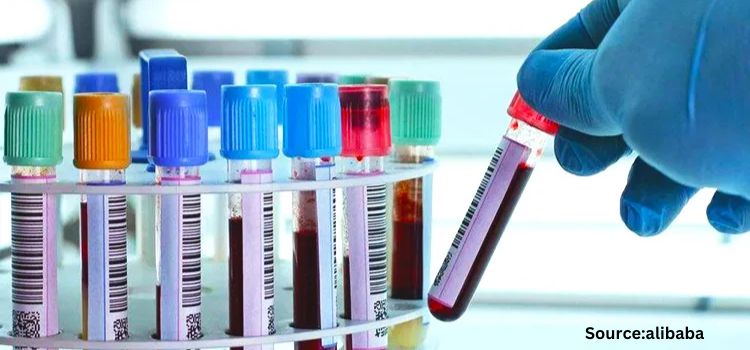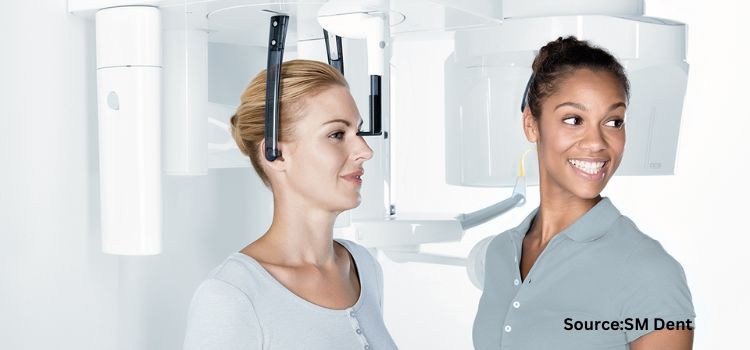
Electromyography Wearables Market by Component (Hardware, Software, and Services), by Product Type (Surface EMG Wearables and Intramuscular EMG Wearables), by Application (Physiotherapy, Prosthetics Control, Muscle & Nerve Disorder Diagnosis, Kinesiology, and Others), and by End-User (Sports Rehabilitation Centers, Medical Device Manufacturers, Hospitals, Clinics, Physiotherapy Centers, and Others) – Global Opportunity Analysis and Industry Forecast 2024-2030
US Tariff Impact on Electromyography Wearables Market
Trump Tariffs Are Reshaping Global Business
Market Definition
The Electromyography Wearables Market size was valued at USD 701 million in 2023 and is predicted to reach USD 1163 million by 2030 with a CAGR of 7.5% from 2024-2030.
Electromyography (EMG) wearables are devices that use sensors to detect and measure the electrical activity produced by muscles. EMG wearables typically consist of sensors that are attached to the skin or integrated into a garment. These sensors detect the electrical signals produced by the muscles and transmit the data to a computer or mobile device for analysis. The data can be used to monitor muscle activity during exercise or physical therapy, track progress in muscle recovery after injury, or even to control a prosthetic limb. EMG wearables are a valuable tool for athletes, physical therapists, and individuals looking to monitor and improve their muscle function.
Market Dynamics and Trends
The growing government initiatives aimed at spreading awareness of the importance of physical fitness and monitoring one's health are driving the demand for wearable technology, fueling the growth of the electromyography wearables market.
For instance, various countries worldwide have launched health and fitness awareness programs, such as the Fit India Movement in India, the Healthy People program in the U.S., and the National Fitness Program in China, among others. These initiatives aim to encourage people to prioritize fitness and health, contributing to the increasing adoption of wearable technology.
Moreover, technological advancements in sensors, wireless connectivity, and data analytics to collect and analyze muscle activity data, providing more detailed insights into performance and health is further boosting the adoption of the electromyography market.
With the introduction of these innovative technologies, wearable electromyography devices can now offer real-time monitoring of muscle activity, personalized training recommendations, and accurate assessment of muscle fatigue and recovery, contributing to the expansion of the electromyography market.
Furthermore, growing adoption of electromyography wearables in healthcare sector for a wide range of medical applications such as rehabilitation, diagnosis, and treatment of various conditions such as Parkinson's disease, stroke, and neuromuscular disorders is further fostering the growth of the market.
However, technical limitations including faulty sensors which may affect accuracy of electromyography wearables, along with regulatory challenges such as compliance with medical device regulations and data privacy laws are the major factors restraining the growth of the market.
On the contrary, the integration of electromyography technology for developing prosthetic limbs that can provide sensory feedback to the user to control the prosthetic limb coupled with the introduction of 5G for faster data transfer which can aid in early detection of diseases is expected to create ample opportunities in the coming years.
Market Segmentations and Scope of the Study
The electromyography wearables market share is segmented on the basis of type, component, application, end-user, and region. On the basis of type, the market is divided into sensor device and wearables. On the basis of component, the market is classified into device, sensor, and app. On the basis of application, the market is segmented into physiotherapy, prosthetics control, muscle & nerve disorder diagnosis, kinesiology, and others. On the basis of end user, the market is divided into sports rehabilitation centers, medical device manufacturers, hospitals, clinics, physiotherapy centers, and others. Regional breakdown and analysis of each of the aforesaid segments include regions comprising of North America, Europe, Asia-Pacific, and RoW.
Geographical Analysis
North America holds the dominant share of electromyography wearables market and is expected to continue its dominance during the forecast period. This is attributed to factors such as the growing neurological and musculoskeletal disorders such as Parkinson's disease, multiple sclerosis, and muscular dystrophy in countries such as the U.S. and Canada.
According to the National Institute of Neurological Disorders and Strokes, Parkinson's disease (PD) is the second most neurodegenerative disorder in the United States with approximately 1 million people being diagnosed with PD in 2021. This rising number of diseases in North America is driving the demand for electromyography devices, as these devices can help in early detection and effective treatment of such diseases.
Moreover, the growing popularity of wearables devices as the North America region is witnessing a growing focus on sports and fitness, the demand for EMG wearables to monitor muscle activity is driving the growth of the market in this region.
According to the National Library of Medicine, 30% of the U.S. adults use wearable health care devices with embedded sensors to collect a variety of physiological health information, and the wearable health care device market is expected to reach USD 139.35 billion by 2026.
On the other hand, Asia-Pacific is expected to show a steady rise in the growth of the electromyography wearables market due to the growing medical manufacturing industry in countries such as China, India, and Japan are leading to an increase in the availability of EMG wearables, which is boosting the growth of the electromyography wearables market in this region. According to the International trade Administration, China is the second-largest healthcare device manufacturing country and the wearable device market is expected to reach USD 38.4 billion by 2025.
Moreover, with the increasing healthcare spending in the Asia-Pacific region, there is a growing demand for advanced medical technologies such as EMG devices to monitor and track health conditions is further driving the growth of the electromyography wearables market in this region. According to the National Investment Promotion & Facilitation Agency, Indian healthcare industry reached USD 372 billion in 2022, highlighting the rising adoption of wearable devices in the region.
Competitive Landscape
Various market players operating in the electromyography wearables market include Biometrics Ltd., BioRESEARCH Associates Inc., Industrial Technology Research Institute, Natus Medical Inc., Cadwell Industries Inc., Nihon Kohden Corporation, Delsys, Cometa Systems, Noraxon, Allengers, Electrical Geodesics Inc., Masimo Corporation, BIOPAC Systems Inc., Medtronic Plc, NCC Medical Co. Ltd., and others. These market players are adopting various strategies such as product launches to remain dominant in the electromyography wearables market.
For instance, in January 2023, Industrial Technology Research Institute launched wearable device for exercise health monitoring named iSportWear. The new device uses radar-power technology and is incorporated in different sports accessories such as sunglasses or handlebars to help monitor user's psychological condition.
Moreover, in January 2023, Softmatter launched new technology platform to provide the use of wearable thorugh the use of sensors in textiles. Through this launch, the company aims to integrate electromyography technology in wearable clothes.
Furthermore, in December 2022, X-trodes launched a new wearable solution for remote facial electromyography measurement for medical, research and consumer communities. The new electromyography device can measure facial expressions and decipher emotional reactions to identify person's psychological and neurological status for better medical diagnosis.
Key Benefits
-
The report provides quantitative analysis and estimations of the electromyography wearables market from 2024 to 2030, which assists in identifying the prevailing market opportunities.
-
The study comprises a deep-dive analysis of the electromyography wearables market including the current and future trends to depict prevalent investment pockets in the market.
-
Information related to key drivers, restraints, and opportunities and their impact on the electromyography wearables market is provided in the report.
-
Competitive analysis of the players, along with their market share is provided in the report.
-
SWOT analysis and Porters Five Forces model is elaborated in the study.
-
Value chain analysis in the market study provides a clear picture of roles of stakeholders.
Key Market Segments
By Type
-
Hardware
-
Software
-
Services
By Product Type
-
Surface EMG Wearables
-
Intramuscular EMG Wearables
By Application
-
Physiotherapy
-
Prosthetics Control
-
Muscle & Nerve Disorder Diagnosis
-
Kinesiology
-
Others
By End-User
-
Sports Rehabilitation Centers
-
Medical Device Manufacturers
-
Hospitals
-
Clinics
-
Physiotherapy Centers
-
Others
By Region
-
North America
-
The U.S.
-
Canada
-
Mexico
-
-
Europe
-
The UK
-
Germany
-
France
-
Italy
-
Spain
-
Denmark
-
Netherlands
-
Finland
-
Sweden
-
Norway
-
Russia
-
Rest of Europe
-
-
Asia Pacific
-
China
-
Japan
-
India
-
South Korea
-
Australia
-
Indonesia
-
Singapore
-
Taiwan
-
Thailand
-
Rest of Asia Pacific
-
-
RoW
-
Latin America
-
Middle East
-
Africa
-
REPORT SCOPE AND SEGMENTATION:
|
Parameters |
Details |
|
Market Size in 2023 |
USD 701 Million |
|
Revenue Forecast in 2030 |
USD 1163 Million |
|
Growth Rate |
CAGR of 7.5% from 2024 to 2030 |
|
Analysis Period |
2023–2030 |
|
Base Year Considered |
2023 |
|
Forecast Period |
2024–2030 |
|
Market Size Estimation |
Million (USD) |
|
Growth Factors |
|
|
Countries Covered |
28 |
|
Companies Profiled |
15 |
|
Market Share |
Available for 10 companies |
|
Customization Scope |
Free customization (equivalent to up to 80 working hours of analysts) after purchase. Addition or alteration to country, regional, and segment scope. |
|
Pricing and Purchase Options |
Avail customized purchase options to meet your exact research needs. |
KEY PLAYERS
-
Biometrics Ltd.
-
BioRESEARCH Associates Inc.
-
Industrial Technology Research Institute
-
Natus Medical Inc.
-
Cadwell Industries Inc.
-
Nihon Kohden Corporation
-
Delsys
-
Cometa Systems
-
Noraxon
-
Allengers
-
Electrical Geodesics Inc.
-
Masimo Corporation
-
BIOPAC Systems Inc.
-
Medtronic Plc
-
NCC Medical Co. Ltd.

















 Speak to Our Analyst
Speak to Our Analyst





















